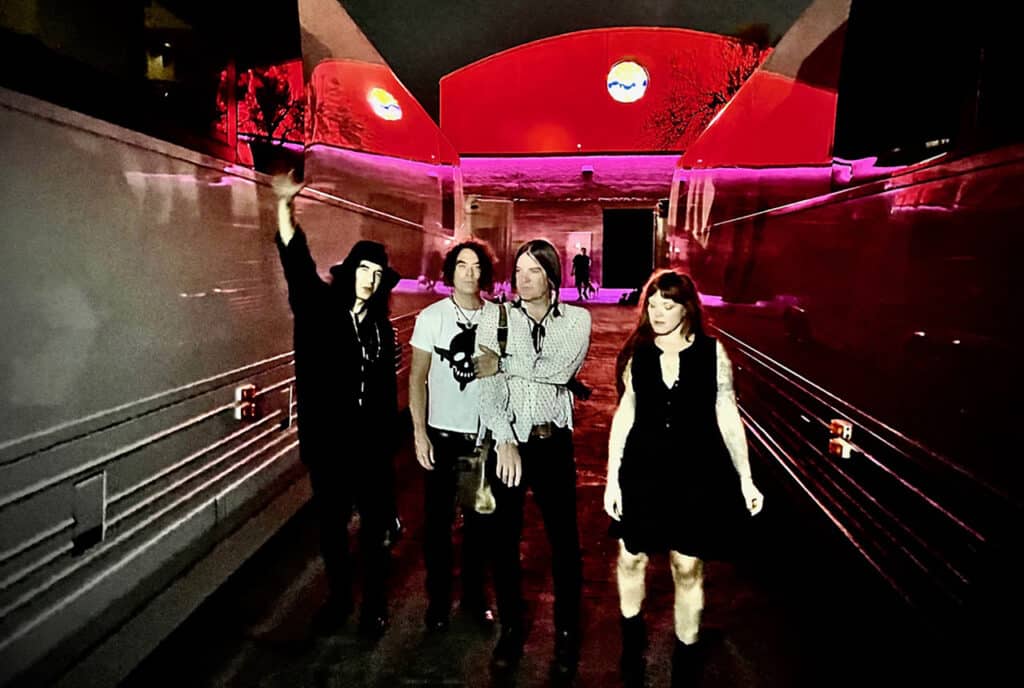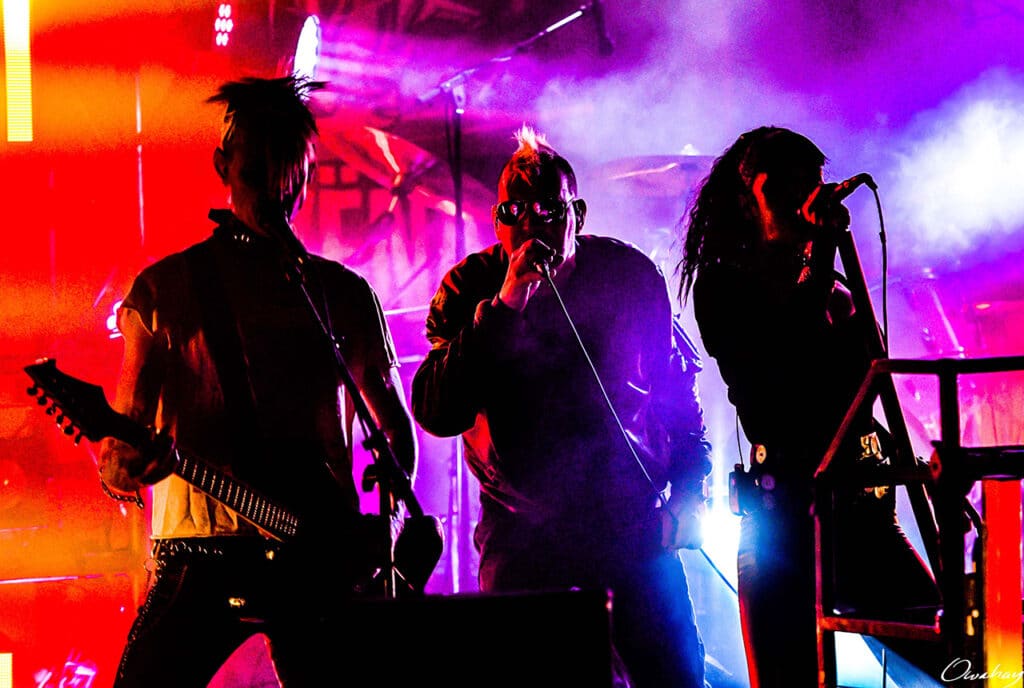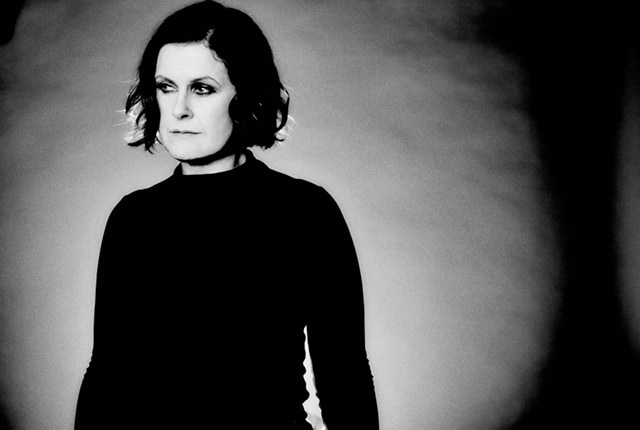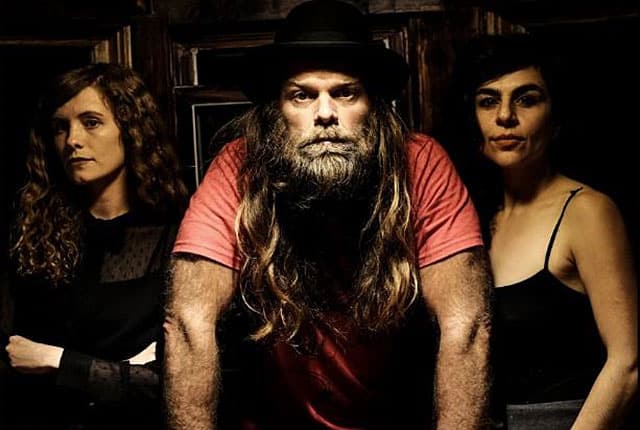Placing equal emphasis on music and visuals, French multimedia duo Gangpol & Mit create works that successfully combine the bizarre and strangely familiar. Their songs incorporate a wide variety of genres, from loungy soundtrack music to robotic bleeps and beats. At times, they really bounce around through different styles, but it never seems jarring or forced. Visually, Gangpol & Mit lean towards bright colors and highly geometric cartoon characters. Among other things, they have made animated videos and utilize projections and puppets for live performances.
The latest Gangpol & Mit album, “The 1000 Softcore Tourist People Club,” came out earlier in the spring on Mike Patton’s Ipecac Recordings. The following is an email interview with member Sylvain Quément.
Are you both involved equally with the music and visuals? If not, what is the collaborative process like in that respect?
Roles are separate: Guillaume works exclusively on the visual side while I concentrate only on the music one. But we’re both equally in charge of the general artistic direction of what is created by Gangpol & Mit. Although I never make a picture and he never creates a sound, we constantly discuss a lot about the contents, meaning and processes, also give advice to each other, in order to tune music and visuals together.
Are there specific ways that you feel visual side of things influences the music, and the music influences the visuals?
Same processes and concepts run both the sonic and visual sides while we work: we capture, cut, paste, compose, mix … We use multi-layered systems, a few microsamples, structure or rhythm are important on both levels .. Therefore the link is strong and the influence high. It is specific in the way that the visual side – as well as lyrics – injects more meaning by breaking the music’s abstraction. Sound may influence the rhythm of a sequence, and has the power to magnify the emotional side. Whether we start from a few pictures, a storyboard, or a melody, we almost always start with a precise idea in mind: we’re gonna make a batucada played by a call-center team, a geometrical sexual tune, a ballad sang by a stock exchange tv speaker …
When you perform live, are the video projections interactive? (perhaps live VJ’ing or synced up with the electronic musical instruments?)
So far we used a very simple triggered live montage system.
We don’t have a fascination for interactivity in itself, but like to focus on the content provided inside a simple technical setup: so far, one screen and short video sequence triggered live, with a few cardboard puppets shot by webcam too. But we’re currently working on our new live project for autumn: as we have a specific idea requiring multi-screen, we’ll have a whole new midi-triggered system and more interactions than the previous live set.
What inspired you to do the “Cartoon Park” project aimed at children? Do you have any future plans for it?
Since the beginning, we find a balance in having different projects playing for different kind of audiences.
Carton Park followed our first experiences in playing for children, with the wish we had to work also with Mami Chan & Norman Bambi.
First concert project was mainly intended to transmit to kids the idea that they can easily reappropriate entertainment through DIY tools instead of just watching it. Second project lead us to a more narrative and quiet show, based on the story of an amnesic girl on a deserted land having to fight bore and loneliness by various kind of activities: making music, making imaginary friends, making war …
Could you describe the main instrumentation you use, both in the studio and on stage?
Has it changed much throughout your career, and if so how do you think it has affected/influenced your music and/or creative process?
We are mainly computer-based artists, injecting a countless amount of various small elements in it.
We are always in search of a good balance, whether on studio or stage, between required control and entertainment for us and the audience, between personal vocabulary and the necessity to renew ourselves: cardboard puppets, electric kalimba and ukulele, vocoder harmonies … We have our trademark tools, but there’s definitely a challenge now in finding other ones and also surely going more acoustic in music despite all the technical lacks I may have.
How did you get involved with Ipecac Recordings?
One day we woke up with an email from Mike Patton in our mailbox.
It looks like he heard about us thanks to a mutual friend based in Italy, Filippo, who runs a project named Okapi.
I must admit this is a good way to wake up in the morning.
There seems to be a spontaneous/improvisational feel to a lot of “The 1000 Softcore Tourist People Club.” Did you make conscious effort to capture spontaneity in the recording and try to avoid over producing/over sequencing?
I’m highly happy if so, although it is probably still way too much over-sequenced.
As a maniac and control-freak, I do lots of efforts trying to re-inject some feeling, spontaneity, warmth or body into the computer-based home studio process. Many of my headachy problems come from the fact that composition and producing times are not separate. This sometimes leads to lose the thread of a track, something I plan to avoid in the future by forbidding any arrangement, recording or mixing anything until composition in complete. So classic…
With both the music and visuals, you bring together a lot of different ideas and influences. Are there any things that you feel have influenced you that perhaps don’t come through as immediately apparent/which people don’t normally pick up on?
It is usually easy to track down influences when they are related to shapes and styles we combine and play with. But there are of course deeper ones, things we have nothing to do with in the field of shapes, but with whom I think we share a certain vision. I feel highly energised by a huge range of acts that are for me plain, complete, personal, achieved, in any style of music: for more detailed names, maybe check the indices we always spread through podcasts, blogging activities, events we sometimes organise.
There does seem to be video game influence in your work, so I’m curious of your general thoughts regarding the way the look and sound of classic video games has made its way into other art forms?
I must say I’m embarrassed because I don’t really see the video game influence in our work.
To me, we do synth music that is not 8bit based, and geometrical shapes that are not really pixel related either.
Of course I admit that we are highly digital, and follow computer composition principles inherited from something that has more to do with Tetris scores than with techno loops… But our influences come from synth-pop, exotica, early electronics pioneers, library moog records, and countless mondo hybrid music productions way more than from video game music.
What is in the immediate future for you?
Work in progress on that new show, with a countless amount of satellite projects.










